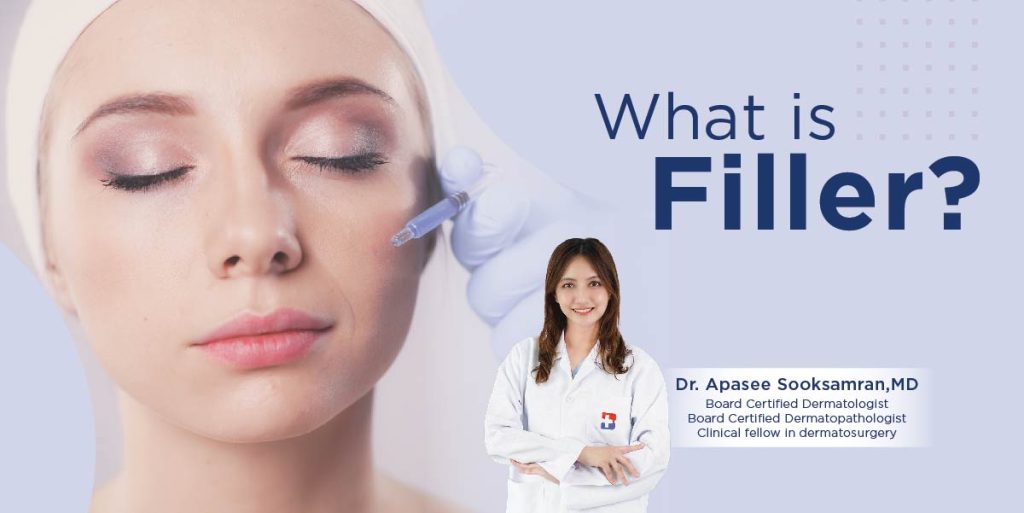
What is filler?
Fillers are mostly made from synthetic hyaluronic acid that imitates human skin. Hyaluronic acid is the most important polysaccharide in the human extracellular matrix, which acts as a scaffold for collagen and elastin. Its high water storage capacity augments and hydrates the skin. Unfortunately, it is gradually deteriorating as we age creating wrinkles and volume loss appearance. Filler is very popular on the market today because it can immediately fill the contour defects and soft-tissue augmentation resulting in a natural appearance and minimal downtime. FDA-approved hyaluronic acid was the “gold standard” of injectable fillers in 2003.
How many types of filler?
US Food and Drug Administration injectable dermal fillers can be classified into two main categories, namely;
1.Temporary Absorbable Fillers
Hyaluronic Acid (HA)
Hyaluronic acid consists of repeating polymer chains of the polysaccharide with interval cross-links of agents that bind the polymer together. By varying the type of cross-linking material and the amount, the characteristics of the gel can vary in the degree of hardness, amount of lift, duration of survival, and resistance to degradation by heat or enzymes.
To date, many hyaluronic acid fillers have been approved for cosmetic use such as Restylane®, Juvederm®, Perlane®, and Belotero®.
Hyaluronic acid is mostly used because it offers the advantage of reversibility in the case of undesirable placement.
Calcium Hydroxylapatite (CaHA)
CaHa known as Radiesse®, is made of calcium and phosphate ions identical to the mineral portion of bone, it is characterized by an outstanding biocompatibility with the human organism. Soft tissue augmentation with CaHA filler leads to long-term deposition of new collagen. Another filler that contains CaHa is Neuvia®.
Poly-L-lactic Acid (PLLA)
Poly-L-lactic acid, tradename Sculptra® works deep within the skin to help stimulate collagen production. Unlike hyaluronic acid fillers, Sculptra helps stimulate the skin’s natural collagen production. Unlike hyaluronic acid fillers, Sculptra ® undesirable effect is irreversible and this product lasts in tissue for two years.

2.Permanent Non-Absorbable fillers.
Permanent soft tissue fillers persist indefinitely in tissues. The potential irreversible adverse effects of permanent filling agents must be considered carefully before use. The example of products is as follows.
Silicone can exert its effects by acting as a direct volume filler and a stimulant for new collagen formation.
Autologous fat transfer provides soft tissue augmentation without the risk of allergic reactions. The degree of persistence of fat in the treated site is variable and is dependent on multiple factors, such as clinician technique and treatment location. The fat embolus that causes vascular occlusion is a potentially serious complication of this procedure.
Ref:
- Luebberding, S., & Alexiades-Armenakas, M. (2012). Safety of dermal fillers. Journal of drugs in dermatology: JDD, 11(9), 1053–1058.
- Jean Carruthers, MD, FRCSC, Shannon Humphrey, MD, FRCPC, FAAD UpToDate website last updated: Feb 28, 2022. assessed Oct 31, 2023. < https://www.uptodate.com/contents/injectable-soft-tissue-fillers-permanent-agents?sectionName=PRECAUTIONS&search=DERMAL%20FILLER&topicRef=16532&anchor=H3502728&source=see_link#H881865 >






